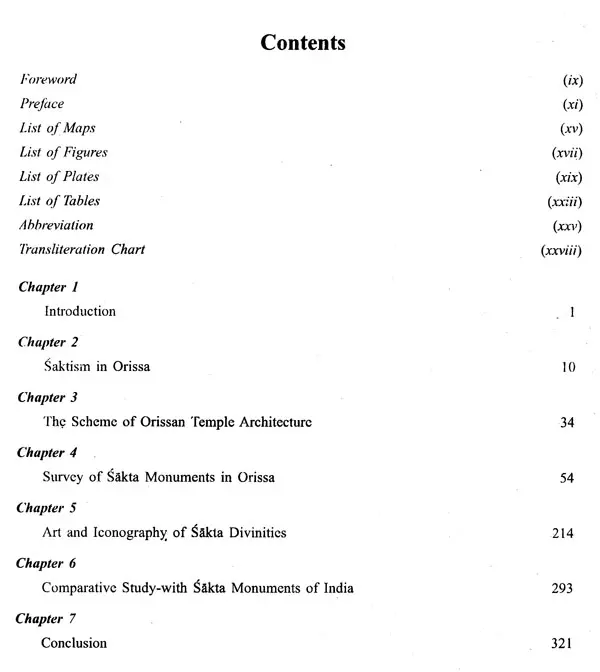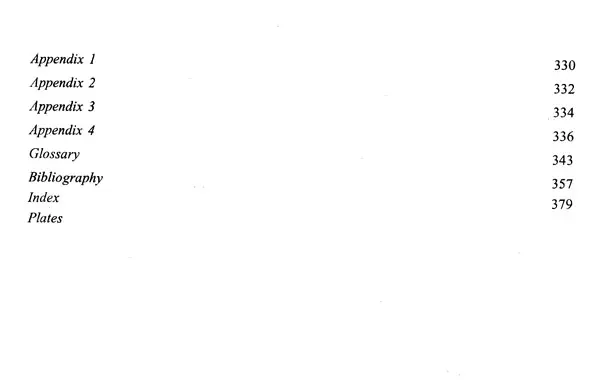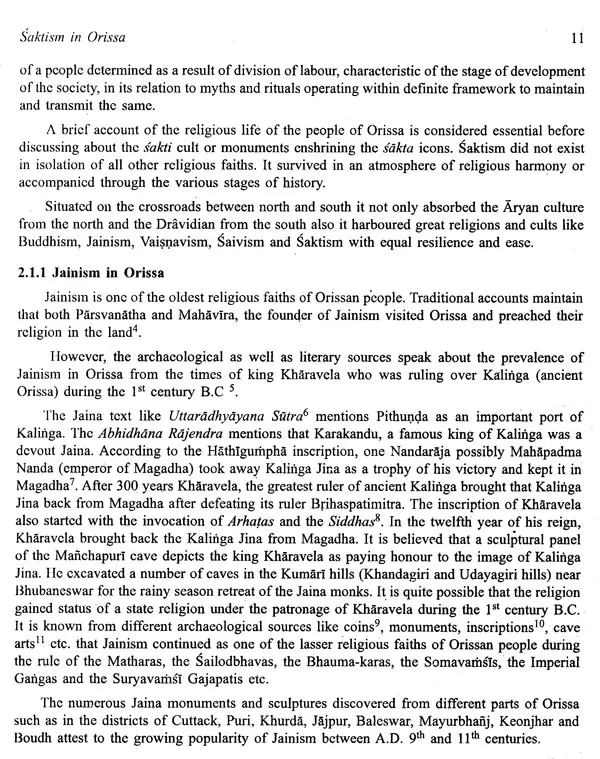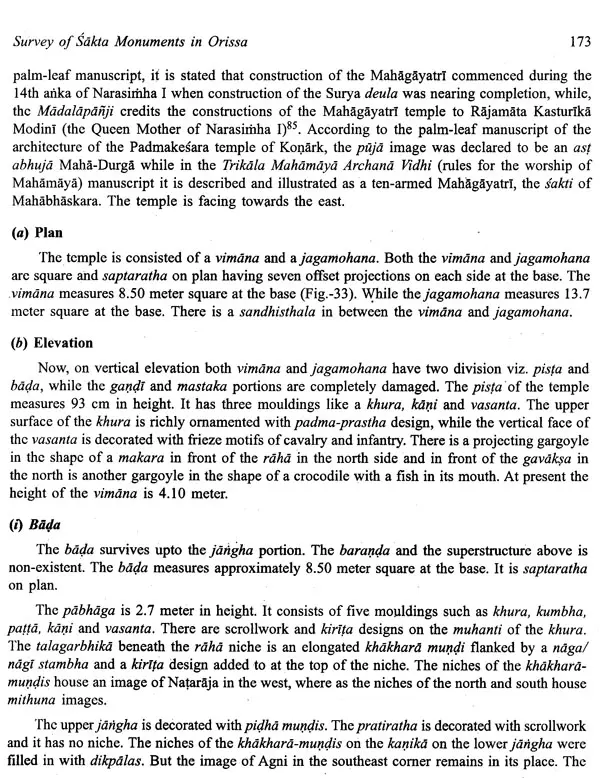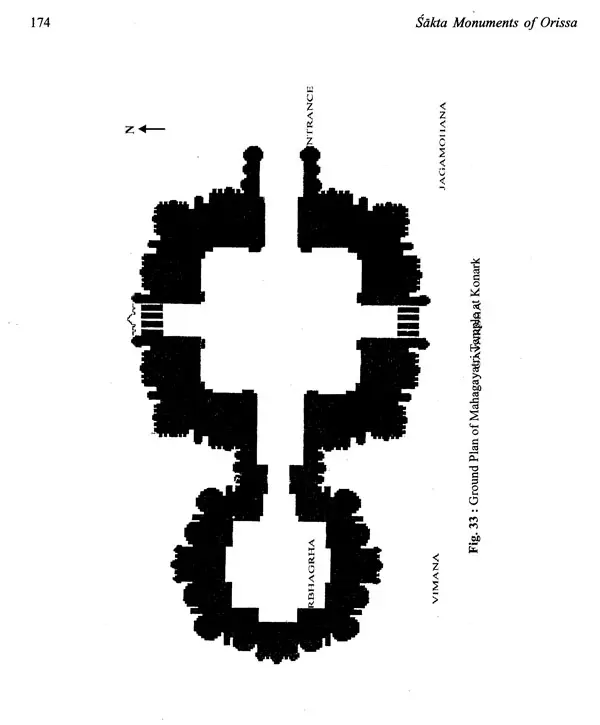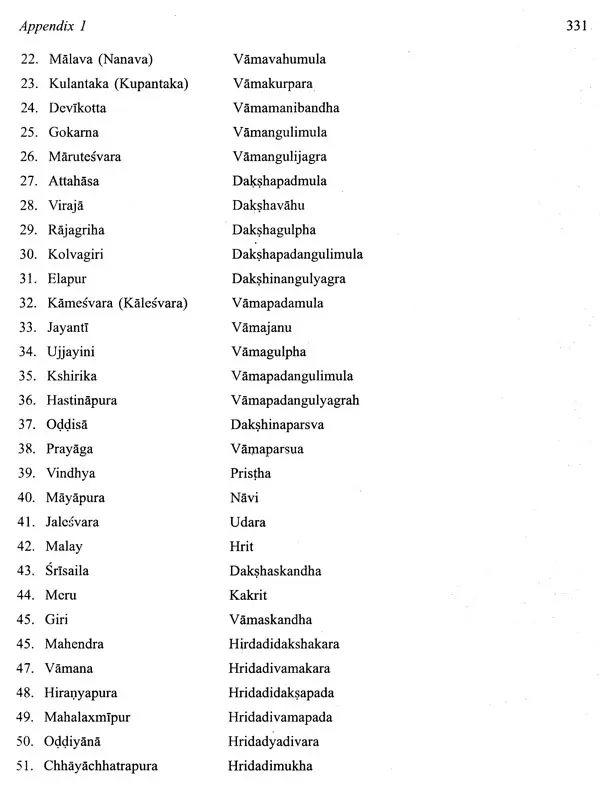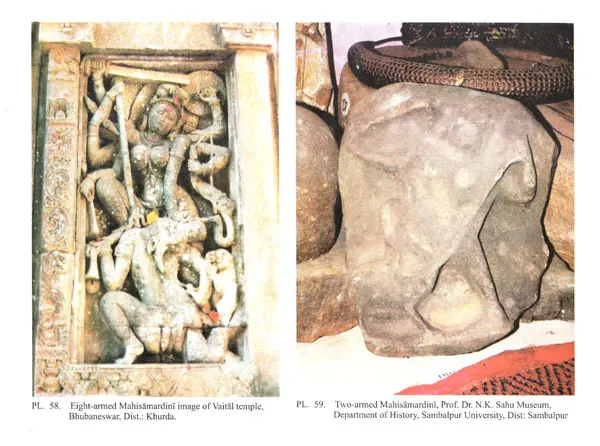
Sakta Monuments of Orissa- A Study on Art, Architecture and Iconography
Book Specification
| Item Code: | UAN456 |
| Author: | Jayanti Dora |
| Publisher: | Bharatiya Kala Prakashan |
| Language: | English |
| Edition: | 2010 |
| ISBN: | 9788180902390 |
| Pages: | 440 (Color and B/W Illustrations) |
| Cover: | HARDCOVER |
| Other Details | 11.00 X 9.00 inch |
| Weight | 1.67 kg |
Book Description
This book is a during attempt to present a consolidated record of Sakta Monuments of Orissa which are so widely distributed throughout the length and breadth of the state. Sakti, the eternal source of energy is an indigenous conception of the universal mother goddess. The impact of Saktism shapes the religious and socio-cultural fabric of the mass.
The author deals with the Organisation and evolution of Saktiam in India as well as as in Orissa. It reveals the scheme of art and architectural peculiarities of Sakta monuments. More than hundred Sakta monuments have been documented with photographic illustrations supplemented by maps, tables and drawings of the ground plans and elevations.
Particular care has been taken to explore the art, architecture and iconographic features along with the sculptural wealth of the different types of Sakta monuments. A comparative study of temple arts of Khakhara and circular hypaethral style of temples of Orissa with that of other parts of India has been made to establish the unique feature of Orissan temples to enshrine female goddesses.
In nutshell, this book contains the answers of all questions of what, where, when, how and why about Sakta monuments of Orissa. Hence, this book would immensely benefit the students and researchers of art history and archaeology and general readers as well.
Jayanti Dora (1969) was graduated with first class Honours with distinction and selected for the award of National Scholarship. She was all along a first class student from H.S.C. to M.Phil. and was placed in the best tenth at the graduate and post graduate stage. She was awarded Ph.D. Degree from Sambalpur University in recognition of her research work on "Sakta Monuments of Orissa (From Early Times to the 13 century A.D.)". She started her career as a Lecturer in the P.G. Department of History in the Utkal University, Bhubaneswar and at present she is Reader in the P.G. Department of History in the Sambalpur University. Her fields of specialization are Regional History and Architecture. She is a life member of Professional bodies like Orissa/Indian History Congress and many others. A large number of her research articles find places in the National and International publications.
Monument, whether in the form of building, pillar or statue of historical importance are treated as principal visible and material records of human evolution through the ages In India man's ideals have found expression in numerous beautiful monuments showing that few countries possess a richer architectural heritage of this kind.
The sakta monuments are those religious edifices, which are dedicated to sakta goddesses of any pantheon. These momiments exhibit the exuberance of sakta divinities in addition to the presiding goddesses in the sanctum-sanatorium. The presence of female figures as parsvadevatas or the deities enshrined in the exterior wall niches clearly suggest that the temples or religious structures for gods or goddesses are assigned to female deities.
It is true that temples in some form must have originated as soon as the image worship came into vogue basing upon the idea that god has made man out of his own form. When god was universally conceived in human for, such an anthropomorphic form required a habitation, a shelter and this probably resulted in preparing a structural shrine. Each and every component in a temple has a definite identity and in turn each part is a part of the whole, which is also conceived as a cosmic being or vastupurusa The temple architecture in India had its humble beginning right from the Mauryan period (third century B.C) as evident from the excavated temples at Sanchi and Bairat. However, it gained momentum in the Gupta period. The Hindu temple was considered as one of the decisive innovations of the Imperial Guptas, A large number of temple of a wide range of variety were constructed in India during the post Gupta period over a time span of more than a millenniom. Geomorphologic distribution and architectural styles reveal that the temples in India can be divided into three broad groups such as nagara, dravida and vesara. However, an inscription of A.D. 1215 in the mukhamandapa of the Aamritesvara temple at Holal in Bellary district of Karnataka speaks of a fourth style. i.e.. Kalinga in addition to the former styles. Thus it is evident that Kalinga, the ancient name of Orissa had a distinct position in the field of temple building in India.
Situated on the east coast of India, on the Bay of Bengal, Orissa has been swept away be different religious faiths like Buddhism, Jainism, Saivism, Vaisnavism, and Saktism. The origin of sakti cult in Orissa may be traced to the cult of fertility whose symbolical representation is noticed in the from of bisected triangles resembling female genitals engraved and painted on the walls of Mesolithic, Neolithic and Chalcolithic rock pictures discovered in the rock shelters of Ushakothi, Vikramkhol and Lekhamoda in the sand stone hills of western Orissa.
Monuments by virtue of their historical significance stand as sentinels of time and present aval commentary of the thoughts, beliefs, aspirations and attainment of the by gone days. The monograph Sakta Monuments of Orissa A study on Art, Architecture and Iconography is a comprehensive survey of the monuments and archacological remains and vestiges of the mother goddess in Orissa from early times to the thirteenth century A.D. The study traces the origin of mother worship in Orissa from the prehistoric times as notified in the prehistoric rock paintings and engravings preserved in rock shelters. Bisected triangles and triangles with cupules at the centres are considered as the symbols of the primordial mother venerated for her procreative energy and prowess.
Orissa with a chequered history is exceedingly rich in cultural heritage. During the post Gupta period there was a great deal of temple building activities for more than one thousand years Bhubaneswar, the modem capital of the State, was the centre of activities where there are more than five hundred temples belonging to different periods and different stages of construction. The architects (silpin) constructed the temples under the prescription of Silpa texts in unbroken continuity for more than seven hundred years from the sixth century A.D. to the thirteenth century A.D. without being distracted by the change of patronage of the successive ruling dynasties such as the Sailodbhavas, the Bhauma-karas, the Somavamsis and the Gangas and produced a homogenous group of a regional style popularly known as the Kalingan style named after the ancient name of the state. This style of temple building had achieved all India recognition as attested by the Amritesvara temple inscription of the thirteenth century AD at Holal in Bellary district of Karnatak Three types of temples namely rekha, pidha and khakhara were perfected for specific requirements. While rekha deula (temple) was dedicated to the presiding deity and the Pidha deul constructed in front of the rekha deul was meant for the devotees, khakhara deul was dedicated to enshrine the mother goddess, which is an unique innovation in the art heritage of India.
Dr. Jayanti Dora while presenting her study in seven chapters addressed the core issue in Chapter Four, where she has given an exhaustive account of the Sakta monuments of Orissa in respect of their plan, elevation, cross-section, decoration, sculptural wealth and stylization etc. with particular reference to the khakhara deul. Care has been taken to supplement the discussion with adequate illustrations, maps, tables and appendixes. The study concludes with a comparative study of the khakhara deul and Sakta images of Orissa with that of the temples and images of other parts of India.
I congratulate Dr. Dora for her monograph on a very important aspect of the art, history and archacology of Orissa.
This mahamantra (great magical prayer) explains that sakti (energy) is there in all matters, living and non-living, the existence of no place or object is possible without the embodiment of energy. From this energy, possibility of various actions (physical, metaphysical or cosmic) occurs. The very name of energy is deified as sakti as per the Hindu faith and belief. These actions (display of energy) are multifarious, and their natures are classified differently as creative, protective and destructive. Another school of thought advocates that Saktism primarily represents the worship of an active female principle as divine mother or supreme brahman. Accordingly, she is the progenitor of all creations. Those who worship the supreme deity exclusively as a female principle are called sakta. Saktism is a very important cult among the Hindus since very early times. Sakti is worshipped in various forms and numerous shrines are dedicated to her images in different parts of the country.
Mother worship is one of the most ancient faiths of mankind. It was probably in the upper Paleolithic stage that the man realised the procreative potential of the woman as revealed by the discovery of the figurine of Venus at Willendrof in Austria and several geometric triangles, symbolising the procreative genital organ of females in prehistoric cave art and rock art. It is her procreative potential that made her the embodiment of energy or sakti itself. The archaeological discovery of female figurines in pre-historic world, essentially in the Eastern Europe, Western Asia, Persia and India indicate that the cradle land of the mother goddess cult was in the Southern Russian Steppes and Western Asia. From these lands the cult probably spread with greater influence to Eastern and Central Europe at the beginning of upper paleolithic times and gradually, probably, simultaneously, the cult was introduced in the pre-historic communities of Iran and a little later in Baluchistan and Afghanistan. As stated by B. Srivastava, the mother goddess is held high in antiquity and also it seems that she is the earliest manifestation of the divine principle to be represented in a visual form in bone, ivory and stone. As such, her iconographic forms were fixed and individualized and she got the status of an ultimate goddess as universal mother, responsible for giving life, vitality and prosperity as early as the upper Palcolithic times.
**Contents and Sample Pages**
